
click image to zoom
Available translated into Welsh here Y Flwyddyn Cadw Gwenyn Beekeeping is a fascinating and rewarding hobby with plenty to learn but for new beekeepers, piecing it all together can be a little daunting. In this book, Lynfa Davies, NOB, walks you through the beekeeping year month by month. She outlines what to expect each month and the key tasks that…

click image to zoom
Available in English here The Beekeeping Year Mae cadw gwenyn yn ddiddordeb hynod ddiddorol a gwerth chweil gyda digonedd i'w ddysgu, ond i'r rhai sy'n dechrau cadw gwenyn o'r newydd, mae dod a phopeth ynghyd yn gallu bod yn anodd. Yn y llyfr hwn, bydd Lynfa Davies, NOB, yn eich tywys drwy flwyddyn o gadw gwenyn fesul mis. Bydd yn…

click image to zoom
'A visually captivating guide, essential for all bee enthusiasts and garden lovers.' Jekka McVicar, award-winning herb garden designer and author 'Beautifully written and lavishly illustrated - this is surely the garden bee bible.' Dr George McGavin, entomologist, broadcaster and author Beekeeping has changed. While once it was a hobby that pursued the rich rewards of honey and wax, many beekeepers…
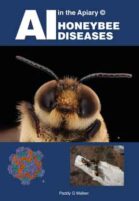
click image to zoom
This book is a comprehensive view of the breadth of different honeybee diseases. Each disease is covered by: • Classification • Biology • Transmission • Symptoms • How to identify the disease • Impact on the colony • Advice on mitigation In its own right this has required a significant amount of research. AI has helped to detail the content…
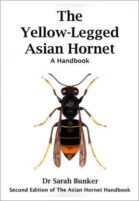
click image to zoom
Yellow-legged Asian hornets cause three important problems for humans: they love eating bees, especially honey bees; if you get too close to a nest they can be very aggressive; and they are voracious predators of our native insects. There has been much research since I published the first edition in 2019. This updated and expanded version is divided into three…
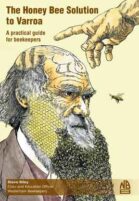
click image to zoom
The Honey Bee Solution to Varroa explains the practical steps beekeepers can take to identify and select for easily observable Varroa-resistant traits in their colonies. The science behind the bees’ mechanisms for controlling their mite populations is explained, in what is a bee-led solution to the biggest challenge facing the European honey bee. Steve Riley is the current Chair and…
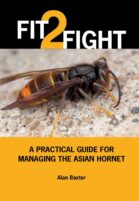
click image to zoom
Asian Hornets are here to stay, but it’s not the end of the world. It’s not the end of beekeeping. But it could be the end of beekeeping as we presently know it. For our bees to survive the ravages of predation by Asian Hornets, and to continue to thrive, we may need to change the way we keep our…
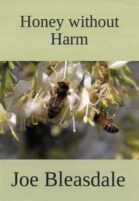
click image to zoom
Many who are concerned about ecology and the ethical treatment of animals argue that eating honey is harmful to bees and the environment. I believe there are valid reasons for their concerns in the way that most honey is produced. Here are some of the practices in worldwide use that I think exploit and harm bees: * Feeding sugar or…
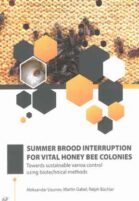
click image to zoom
Aleksander Uzunov
Martin Gabel
Ralph Büchler
The parasitic varroa mite remains the most serious problem for honey bee colonies worldwide. Despite various chemical treatments, many beekeepers still lose their colonies each year. This book sets out the authors' novel vision and practical steps on to how to manage bees for varroa control using a "nature based beekeeping" approach. With clear step-by-step charts on what to do…

click image to zoom
"Richly illustrated with the author’s photographs, there’s a first-hand commentary on what to look for and when just to trust the nurse bees to know their job. Highly recommended for any beekeeper, even with modest experience, who wishes to improve their stock." Geoff Hardman (Editor, Gwenyn Kernow magazine, CBKA) Say “queen rearing” to most beekeepers, and they will probably run…
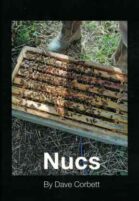
click image to zoom
All you need to know about nuclei colonies and their value. Dave Corbett lives in Bedfordshire, keeping bees with the assistance of his father, John. Dave began beekeeping in 2014, with a single hive in his back garden. From these small beginnings he has managed to expand his beekeeping operations to around 150 colonies, becoming a member of the Bee…
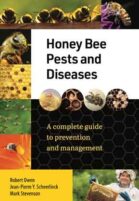
click image to zoom
Robert Owen
Jean-Pierre Y. Scheerlinck
Mark Stevenson
Written by three scientists with extensive beekeeping experience, and suitable for both hobby and professional beekeepers, this is the essential reference for diagnosing and managing honey bee diseases and maintaining honey bee health. Detailed chapters, illustrated with numerous photographs and diagrams, cover: • integrated pest management (1PM) • Varroa • viruses • brood diseases • adult diseases • mites and…
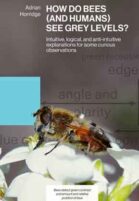
click image to zoom
Since the nineteenth century there have been many descriptions of bees' ability to discriminate coloured papers, but it is less well known that they can be trained to come to a grey target showing no colour. From their recognition of grey, and ability to discriminate light grey from dark grey, and from white and black, von Frisch concluded that bees…
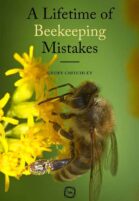
click image to zoom
A Lifetime of Beekeeping Mistakes covers all the basics of managing successful hives from buying in bee stocks and equipment to record keeping, establishing and growing colonies. It considers the merits of different types of hive and provides clear advice on queens, drones, honey extraction, diseases and pests. The book is written from the voice of experience rather than academic…
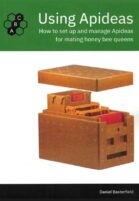
click image to zoom
Queen raising is one of the most rewarding aspects of beekeeping, allowing beekeepers to propagate the desirable characteristics of their best colonies throughout their apiaries. Father and son commercial beekeepers Ken and Dan Basterfield, both holders of the National Diploma in Beekeeping, have been using Apideas to raise their own queens for forty years. Here they present the tips and…
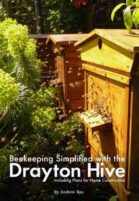
click image to zoom
The Drayton Hive is a hybrid of several established hive designs, combining some of their different strengths and avoiding some of the problems inherent in their use. It does not involve heavy lifting or the use of mechanical extractors for honey production; all-round, all-year insulation is built in, and it requires no extra space for winter storage. In the hive’s…
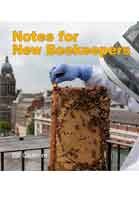
click image to zoom
Bill Cadmore was born and raised in a tiny village on the Norfolk/Suffolk border. He moved to London for university studies and then on to post-graduate work at the University of Leeds. As a teacher of Biology and Physics he went onto become a senior leader in a large comprehensive school in Leeds. Working with other schools, colleges and workplaces…
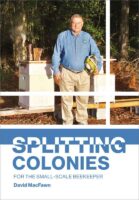
click image to zoom
Splitting Colonies is an important means of colony increase and swarming mitigation. Splitting is an art as much as a science. It should be noted splitting timing will vary year to year based on the local weather and conditions. This book contains information on when to split based on when the nectar flow starts in your area. Several splitting methods…
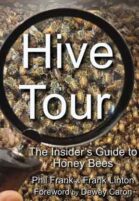
click image to zoom
This tour book is a perfect companion while visiting a glass hive at a museum or nature centre, a field hive, or as a stand-alone exploration. It will guid you, through the seeing chaos, to FIND bees’ fascinating behaviours, anatomy, paternity, use of comb, and the hive’s uninvited invaders.
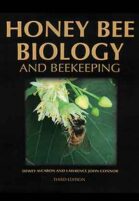
click image to zoom
Dewey Caron
Lawrence J. Connor
Since its release in 1999, Honey Bee Biology & Beekeeping has become a widely accepted textbook of apiculture. Universities use it to teach college students beekeeping and beekeepers use it to teach other beekeepers. It concentrates on the ‘why’, ‘how’ and ‘when’ of beekeeping. It explains bee and beekeeping basics in a manner meaningful to people who lack an intensive…
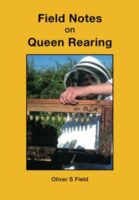
click image to zoom
This is an updated edition of the talk given by Oliver Field to the Scottish Beekeepers Association in 1998. This new version includes colour pictures, a bee breeding chart and a chapter on 'Current Reflections'. Oliver Field was a giant of Bee Farming, having acted as such for over thirty years. His other books include Honey By the Ton and…
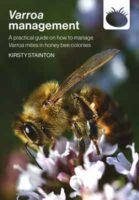
click image to zoom
This resource will provide you with everything you need to know for practical management of Varroa mites, it is the essential user-guide to Varroa treatments. In this guide you will learn: » Why Varroa mites are such a serious pest of honey bees. » How to spot signs that a honey bee colony is carrying a high mite burden. »…
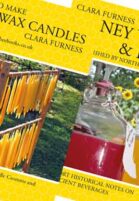
click image to zoom
Make candles, make money!! Make mead be happy!! Special offer for 2 titles, recently Revised & Enlarged, from Clara Furness - £15 for both titles. 1. Honey Wines & Beers 2. How to Make Beeswax Candles
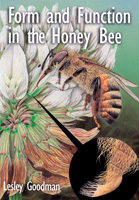
click image to zoom
Lovely book for serious students of honey bee biology. It has wonderful illustrations and is packed with information. If you are an entomology student or studying for BBKA exams then it is a worthwhile read and is considered a standard text. "The book focuses on detailed descriptions of bee body parts and how they work, but the title is woefully…
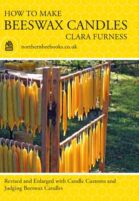
click image to zoom
A collection of articles, originally published in The British Bee Journal. This 20 page A4 reprint is full of information gained by Clara over many years when she was a particularly successful competitor at The National Honey Show.
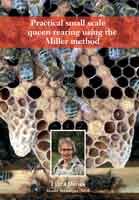
click image to zoom
Rearing new queens for our colonies is a rewarding and important practice that often gets mis-labelled as too difficult and complicated. This, is simply, not correct and with some planning and attention to detail new queens can be produced at a fraction of the cost that you will pay for them elsewhere. Queen rearing is an organised process where thought…
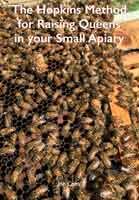
click image to zoom
Raise your own Queens and improve your stock. The Hopkins method requires no purchasing of queen rearing materials or kits, nor learning curve and skills required of grafting. Beekeeping presents many challenges, and one of the most troublesome is finding colonies with no queens.There are queen suppliers who are more than willing to sell you some queens, but the prices of…
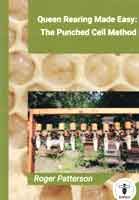
click image to zoom
Raising queens using the Punched Cell method has been in use since the early 20th century. Until now, the booklet "Raise Your Own Queens by the Punched Cell Method" by Richard Smailes, that was first published in 1970, was the most comprehensive source of information. Possibly due to the irregular supply of punches, few have continued to practice the method…
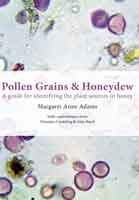
click image to zoom
This book describes, in detail, a simple approach for beekeepers, to identify the plant sources of their own honey. They will occasionally find they have a special honey, and then the jars can be labelled accordingly. From 2019 to 2021, beekeepers from The UK and Continental Europe sent me samples of their honey, and the collection of digital photos from…
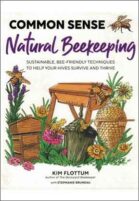
click image to zoom
Kim Flottum
Stephanie Bruneau
Beekeepers today have myriad choices to make that affect their bees' health and productivity. From housing to nutrition, to treating pests and diseases, Common Sense Natural Beekeeping introduces sustainable alternatives for natural hive management. Based on expert advice from Kim Flottum, editor emeritus of Bee Culture magazine and best-selling author of The Backyard Beekeeper, this book teaches holistic, sensible alternatives…
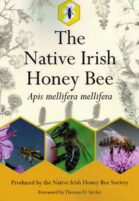
click image to zoom
A collaborative work with contribution from expert beekeepers and scientists throughout Ireland. It contains everything you need to know about the Native Irish Honey Bee - from evolution to genetics and into the future with conservation, and 'how to' sections from commercial beekeepers. Includes a practical section with step by step instructions on queen rearing and bee-breeding techniques. Most beekeeping…
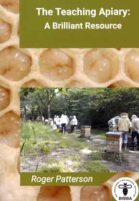
click image to zoom
This book provides help and information for all beekeepers. For BKA officials, demonstrators and apiary managers there is guidance to set up a facility if none exists, with suggestions for improving apiaries already in existence. The ordinary beekeeper who is keen to learn has an indication of what they should seek to gain from their local teaching apiary. There is…
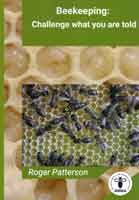
click image to zoom
Have you ever met a beekeeper with fixed opinions about a beekeeping topic? Have you questioned what experience and knowledge they are based on? The craft used to be local, traditionally learnt by observing bees, whereas today, we are bombarded with international communications, promotions, soundbites, sensationalism and the like, with the same information, whether reliable or not, appearing in many…
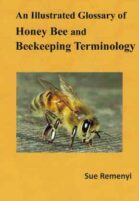
click image to zoom
An Illustrated Glossary of Honey Bee and Beekeeping Terminology is an invaluable reference book for all beekeepers. As with any activity there is always a significant amount of terminology and jargon to get to grips with and this glossary brings together the terminology a beekeeper needs. In addition, more advanced aspects of beekeeping such as the anatomy and biology of…
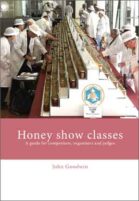
click image to zoom
This book has been written as a guide for everyone involved with honey shows, be it organising, exhibiting or judging. If on the day of the show the book has helped to achieve successful organisation, high standards of exhibiting, well-written and unambiguous honey show schedules, increased interest in honey shows, and more applicants for the BBKA Show Judge certificate, the…
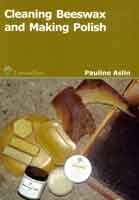
click image to zoom
The aim of this booklet is to encourage beekeepers especially, to make use of their beeswax. I hope it will also inspire those who don't keep bees to source beeswax from their local beekeepers and enjoy using it. This booklet explains how to clean raw beeswax ready for use in crafts such as candles, cosmetics and polish. It also includes…
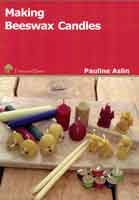
click image to zoom
The aim of this booklet is to encourage beekeepers especially, to make use of their beeswax. I hope it will also inspire those who don't keep bees to source beeswax from their local beekeepers and enjoy using it. Beeswax makes wonderful candles. There is more to candle making than can be covered in 12 short pages, but this booklet explains…
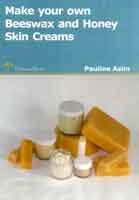
click image to zoom
The aim of this booklet is to encourage beekeepers especially, to make use of their beeswax. I hope it will also inspire those who don't keep bees to source beeswax from their local beekeepers and enjoy using it. There is no need for specialist equipment or fancy ingredients. It really is very easy to make simple but effective skin creams…
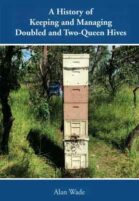
click image to zoom
This book outlines approaches to hive building with more than a single queen. They fall into two distinct categories: single-queen hives sharing common honey storage space and true multiple-queen hives hosting more than one queen. A History of Keeping and Managing Doubled and Two-Queen Hives explains how a honey bee colony with a second laying queen can be established and…
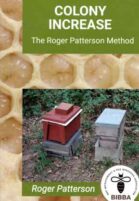
click image to zoom
This book includes several methods of colony increase that can be used individually or in one complete method as described. All elements, although they may not be part of mainstream teaching, have been consistently successful for the author for well over 40 years, using standard equipment. The "Roger Patterson Method", if used as described, can produce a tenfold increase in…
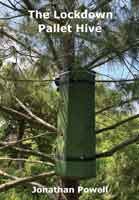
click image to zoom
When many people think of honey bees, they often think of lines of white boxes on the ground, and honey jars. However the natural habitat of a bee is not a box, and neither is it on the ground, and honey is really the bees food, needed to sustain the colony. There are still wild bee colonies, but they lack…
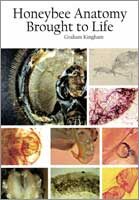
click image to zoom
This book uses photo essays to set out and display the anatomy, internal, external of the honeybee with over 350 detailed micrographs, together with slide images and drawings. Pests and other additional hive activities are also included. It will appeal to anyone interested in this fascinating insect and be particularly valuable to beekeepers studying for their British Beekeepers Association Module…
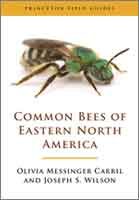
click image to zoom
Olivia Messenger Carril
Joseph S. Wilson
The only portable full-color photographic guide to the most commonly seen bees east of the Mississippi River. "An excellent resource for anyone interested in learning about bees in eastern North America. There really isn't any other book like this." Sheila R. Colla, coauthor of Bumble Bees of North America Bees play a vitally important role in the pollination of native plants…
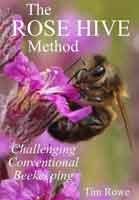
click image to zoom
TO VIEW THE CONTENTS CLICK HERE Ordinary beekeepers everywhere are contributing to the huge pressures honeybees are under. Though well-meaning and hard-working, they are part of the problem that is causing a massive decline in the population of honeybees throughout the world. In this book Tim Rowe challenges the hives and the hive-management we all take for granted, and offers…
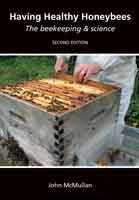
click image to zoom
TO VIEW THE CONTENTS CLICK HERE There has been a change in the beekeeping environment since the first edition in 2012. Today there is a heightened concern about global warming, the natural environment, biodiversity and the need to be guided by science. Among beekeepers there is a greater awareness of these issues with a shift towards sustainable beekeeping; locally-adapted colonies,…
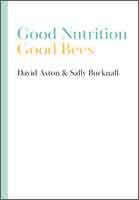
click image to zoom
David Aston
Sally Bucknall
The importance of pollinator species to man’s survival and the functioning of the world’s ecosystems is recognised. Environmental and other stressors have taken their toll on many pollinator species and their abundance. The European Honey bee (Apis mellifera) and man have had a long mutually beneficial relationship and it is vital that this continues. Like all organisms, honey bees need…
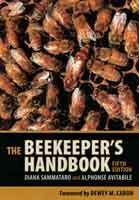
click image to zoom
Diana Sammataro
Alphonse Avitabile
The Beekeeper's Handbook is an invaluable resource for both beginner and veteran beekeepers. "Since the publication of the first edition of the handbook in 1978, many thousands of novice and experienced beekeepers have relied on this book as the preferred single-volume guide to beekeeping.” British Journal of Entomology and Natural History "The Beekeeper's Handbook has guided thousands of beginning and…
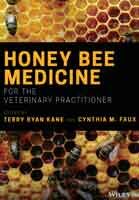
click image to zoom
Terry Ryan Kane
Cynthia M. Faux
Honey Bee Medicine for the Veterinary Practitioner offers an authoritative guide to honey bee health and hive management. Designed for veterinarians and other professionals, the book presents information useful for answering commonly asked questions and for facilitating hive examinations. The book covers a wide range of topics including basic husbandry, equipment and safety, anatomy, genetics, the diagnosis and management of…
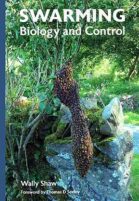
click image to zoom
One of the key events in the bee keeping year (for both the bees and the beekeeper) is the swarming season. In order to obtain the maximum honey yield from colonies, the beekeeper needs to manage the natural swarming process. Much has been written about swarming but this often takes the form of rather prescriptive instructions for swarm control which…
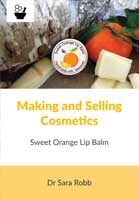
click image to zoom
"Lip balm is the ideal product to start with when you are learning to make cosmetics. A simple mixture made with just a few ingredients ensures you will have a usable balm after your first attempt. When I introduce beekeepers to making cosmetics, I often begin with lip balm. An almost fool-proof cosmetic, lip balm making builds confidence in the…




















































